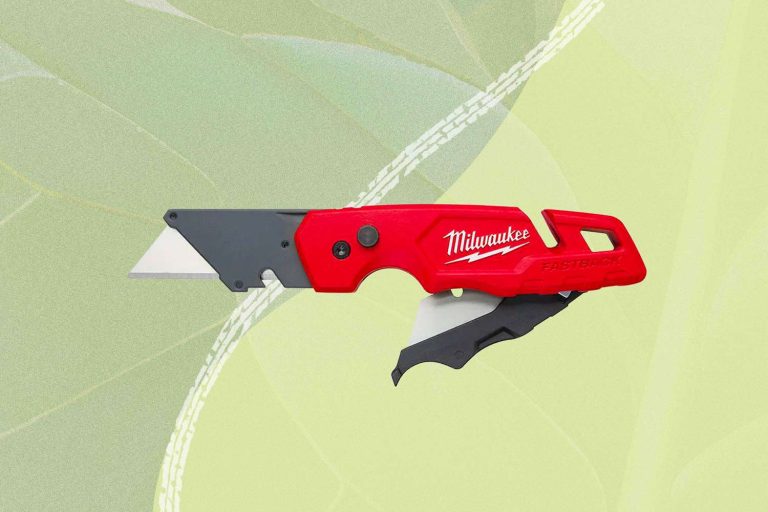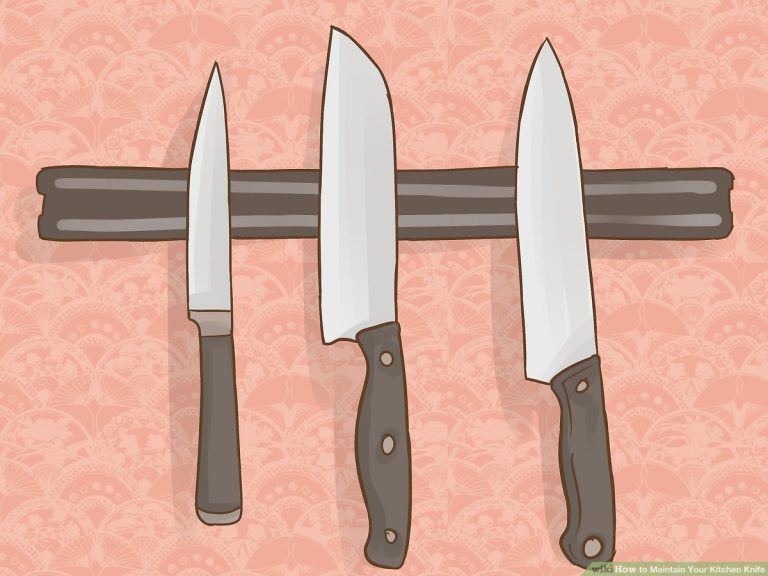How to Dispose of Knives
To dispose of knives, wrap them in newspaper or cardboard, secure with tape, and place in a puncture-proof container for safe disposal at a recycling or waste facility. Every household at some point needs to dispose of old or unwanted knives, whether they are worn out, broken, or simply no longer needed.
However, proper disposal of knives is crucial to prevent accidents and injuries. We will explore the various steps you can take to dispose of knives safely and responsibly. From ensuring they are securely wrapped to finding the appropriate disposal locations, we will provide you with all the necessary information to handle this task efficiently.
By following these guidelines, you can not only protect yourself and your family but also contribute to a safer environment. So, let’s dive in and discover the proper methods of knife disposal.

Credit: www.bobvila.com
Reasons To Properly Dispose Of Knives
table, th, td { border: 1px solid black; border-collapse: collapse; } th, td { padding: 5px; text-align: left; }How to Dispose of Knives
Properly disposing of knives is crucial for minimizing the risk of accidents, preventing illegal activities, and reducing environmental impact.
| Minimizing the risk of accidents | Preventing illegal activities | Reducing environmental impact |
|---|---|---|
| Improperly discarded knives can pose serious dangers, especially in public spaces, where unsuspecting individuals may come into contact with them. By disposing of knives in a safe and responsible manner, we can decrease the likelihood of accidental injuries. | Proper disposal also helps in curbing illegal activities associated with knives. By ensuring that knives are disposed of properly, we limit access to potential weapons for those with malicious intentions. | Knives, if not disposed of correctly, can end up in landfills or be left in the environment, contributing to pollution and harming wildlife. By following proper disposal guidelines, we can greatly reduce the negative environmental impact of discarded knives. |
Assessing The Condition Of Your Knife
Assessing the condition of your knife is crucial before deciding how to dispose of it. First, determine if the knife is still usable. Look for signs of wear and tear, such as a dull blade or loose handle. If the knife is no longer sharp or the handle is damaged, it may not be safe to use.
Next, check for any visible damage or broken parts. Inspect the blade for chips or cracks, as well as the handle for any loose or missing pieces. If the knife has significant damage, it is recommended to dispose of it properly rather than attempting to repair it.
By carefully assessing the condition of your knife, you can make an informed decision on how to dispose of it safely and responsibly.
Options For Knife Disposal
| Options for Knife Disposal |
| When it comes to getting rid of knives, there are several options available. Instead of throwing them in the trash where they can pose a safety risk, consider the following methods for knife disposal. |
| Donating to charity organizations |
| One option is to donate your knives to charity organizations. Many organizations, such as homeless shelters or community kitchens, are in need of kitchen supplies. Before donating, ensure that the knives are in good condition and properly wrapped to prevent any accidents. |
| Trading in for new knives |
| Another option is to trade in your old knives when purchasing new ones. Some stores or knife manufacturers offer trade-in programs where you can exchange your old knives for a discount on new ones. This not only allows you to dispose of your knives responsibly but also gives you a chance to upgrade your kitchen tools. |
| Recycling at specialized facilities |
| Recycling your knives at specialized facilities is another eco-friendly option. Look for recycling centers or facilities that accept metal items. Make sure to contact these facilities beforehand to inquire about any specific requirements for knife recycling. |
| Using a knife disposal service |
| Lastly, consider using a professional knife disposal service. These services are equipped to safely collect and properly dispose of knives. They ensure that the sharp edges are safely handled and the materials are recycled or disposed of appropriately. |
Preparing The Knife For Disposal
When it comes to disposing of knives, it is important to follow proper procedures to ensure safety. To prepare the knife for disposal, start by cleaning and sanitizing it thoroughly. Use soap and warm water to wash the knife, and then rinse it well. Dry the knife completely to avoid any moisture that could lead to rust.
Next, you need to secure the blade for safety. Wrap the blade with several layers of strong tape or use a blade cover if available. This will prevent any accidents or injuries during the disposal process.
Finally, packaging the knife safely is crucial. Place the knife in a sturdy container that is puncture-proof, such as a thick plastic bag or a hard plastic case. Seal the container tightly to prevent any sharp edges from protruding.
Remember, disposing of knives should be done responsibly to avoid harm. Always check local regulations or contact your local recycling center for proper guidelines on the disposal of sharp objects.
Donating Knives To Charity Organizations
When it comes to donating knives to charity organizations, it is important to do some research first. Start by looking for local charities that accept knives as donations. You can easily find this information online or by contacting local organizations directly. Once you have identified a suitable charity, make sure to contact them to inquire about their donation guidelines. Some charities may have specific requirements in terms of the condition and packaging of the knives. Packaging the knives properly is crucial to ensure their safety during transportation and handling. Consider using bubble wrap or sturdy boxes to secure the knives. Donating knives to charity organizations not only helps you dispose of them responsibly but also allows others to benefit from their use.
Trading In Knives For New Ones
When disposing of knives, opting for a trade-in program is a smart choice. Researching retailers or brands that offer such programs is the first step. Understand the requirements set by each program. Ensure the knife is properly packaged before trade-in. Following these steps ensures a hassle-free and environmentally responsible knife disposal experience.
Recycling Knives At Specialized Facilities
Recycling knives is an important step in disposing of them responsibly. To find knife recycling facilities in your area, start by conducting an online search. Look for specialized facilities that accept knives for recycling. Once you have identified a facility, contact them directly for detailed instructions on how to proceed. They will provide you with specific guidelines on arranging for the drop-off or pickup of your knives.
Using A Knife Disposal Service
Using a knife disposal service is a responsible and safe way to get rid of unwanted knives. These services employ proper methods of disposal to ensure that knives are disposed of safely and securely. When exploring knife disposal services available, it’s essential to understand their specific methods of disposal. Some services may melt down the knives, while others may break them down into smaller pieces. It’s important to follow the guidelines provided by the service to ensure that the knives are prepared correctly for disposal. This may involve wrapping them in protective material or placing them in designated containers. So, if you have knives that you no longer need, consider using a professional knife disposal service for a hassle-free and environmentally responsible solution.
Final Thoughts And Considerations
Final Thoughts and Considerations
Encouraging others to dispose of knives responsibly is an important step towards promoting safety within our communities. Taking responsibility for the safe disposal of knives not only protects ourselves but also prevents accidents and potential harm that could be caused by improper disposal. It is crucial to be mindful of the potential dangers of improper knife disposal, as discarded knives can pose risks to individuals who handle trash or recycling. By wrapping knives securely in newspaper or cardboard before placing them in a sealed plastic bag, we can minimize the chance of accidental injury. Additionally, informing others about local knife disposal programs or drop-off locations can help spread awareness and ensure proper disposal methods are followed. Together, by actively promoting responsible knife disposal, we can contribute to a safer environment for everyone.
Conclusion
Safely disposing of knives is crucial for both personal and environmental safety. By following the guidelines mentioned in this blog post, you can ensure that you handle and dispose of knives responsibly. Remember to always store knives in a secure place, use proper protective gear when handling them, and never throw knives in regular trash bins.
Instead, consider options like knife holders, recycling programs, or donating them to charitable organizations. Properly disposing of knives not only reduces the risk of accidents but also helps to minimize waste and protect the environment. So, the next time you need to get rid of a knife, make sure to follow these steps to ensure a safer and cleaner world for everyone.
Stay safe, be responsible, and always prioritize the proper disposal of knives.






